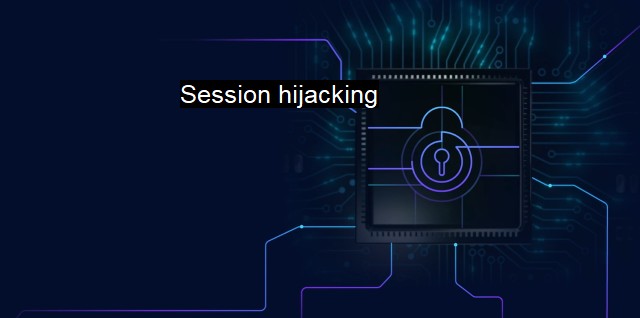What is Session hijacking?
Understanding Session Hijacking: The Risks and Realities of Cyber Attacking through Cookie Hijacking and Session Token Manipulation
Session hijacking, also frequently referred to as cookie hijacking, is a form of security attack that involves the exploitation of a valid computer session, which mostly happens in web sites in the form of web sessions, to gain unauthorized access to information or services. This attack is a predominant issue due to its potential to severely undermine the security and privacy of users on the internet. The contextual frame of session hijacking falls under the broader domain of network-related security threats.Session hijacking gets its name from the sessions that are created when a user logs into applications over the internet. Most websites have a functional mechanism to track the individuals' state or session, after they log in, to provide a personalized experience, without asking for user credentials for every interaction during the browsing session. This is performed by allocating a unique session identifier, also known as a session ID to each user or client. This session ID is saved in a cookie file that resides on the user's device and is shared with the server while visiting various parts of the site.
The problem arises when an attacker hijacks this session ID by using several techniques, such as predicting or brute-forcing the session token, cross-site scripting, trojans or by exploiting various types of vulnerabilities present in the web applications. Once they have successfully hijacked a session, the attacker can impersonate the victim, gaining unauthorized access to carry out malicious activities or steal sensitive data without the server ever suspecting anything wrong, making session hijacking a treacherous security hazard.
What makes session hijacking particularly dangerous is its inherent stealth. Since a session hijack doesn't directly involve a system intruding or breaking system protocols, conventional antivirus software may not be able to detect and block a session hijacking attempt, allowing an attacker's actions to go unnoticed. Modern session hijacking, especially with the rise of open Wi-Fi networks, is even more potent as they provide hackers an easy way to potentially intercept and manipulate data that maintains user sessions.
Thus, to combat session hijacking becomes a significant challenge awaiting cybersecurity experts. Several strategies can be adopted to mitigate session hijacking risks. one can ensure to use encrypted connections or secure HTTP (HTTPS) to minimize the possibility of session hijacking. This essentially means that even if an attacker succeeds in intercepting the communication, without the correct encryption key, the session ID in the communication data would appear scrambled and therefore useless to them. Another popular method involves periodically changing the session ID during a browsing session, making it difficult for an attacker to guess the session ID.
Comprehensive awareness about the threats and precautionary measures, especially among the buyers/users helps in mitigating the impact of session hijacking. For instance, users should avoid accessing sensitive websites through public networks and ensuring they responsibly log out from their sessions once their tasks are completed, reducing the risk of leaving active sessions open to potential attackers.
It is vital for organizations and individuals to continuously enhance and update their defense mechanisms against cybersecurity threats such as session hijacking, as the pace at which these threats evolve and adapt to new technologies matches, and sometimes even outpaces, advancements in security tools themselves. Cybersecurity, and particularly network security and session safeguarding, should always be at the forefront of our considerations, choices, and actions in the digital world. Thus, to combat session hijacking and to develop a secure digital environment, there is rigorous necessity for continuous research, knowledge, and technology updates antivirus, and network security.

Session hijacking FAQs
What is session hijacking?
Session hijacking is a type of cyber attack where an attacker steals a user's session token to gain unauthorized access to a web application.How does session hijacking work?
Session hijacking works by intercepting the communication between a user and a web application to obtain the user's session token. The attacker can then use this token to impersonate the user and perform actions on their behalf.What are some common methods used for session hijacking?
Some common methods used for session hijacking include packet sniffing, XSS attacks, and session fixation attacks. In a packet sniffing attack, the attacker intercepts network traffic to obtain the user's session token. In an XSS attack, the attacker injects malicious code into a web page to steal the user's session token. In a session fixation attack, the attacker sets the user's session ID to a value they know and then waits for the user to log in.How can I protect myself from session hijacking?
To protect yourself from session hijacking, you should use HTTPS to encrypt network traffic, avoid using unsecured public Wi-Fi networks, and regularly clear your browser's cache and cookies. Web developers can also implement security measures such as session timeout limits, IP address validation, and two-factor authentication to prevent session hijacking attacks.| | A | | | B | | | C | | | D | | | E | | | F | | | G | | | H | | | I | | | J | | | K | | | L | | | M | |
| | N | | | O | | | P | | | Q | | | R | | | S | | | T | | | U | | | V | | | W | | | X | | | Y | | | Z | |
| | 1 | | | 2 | | | 3 | | | 4 | | | 7 | | | 8 | | |||||||